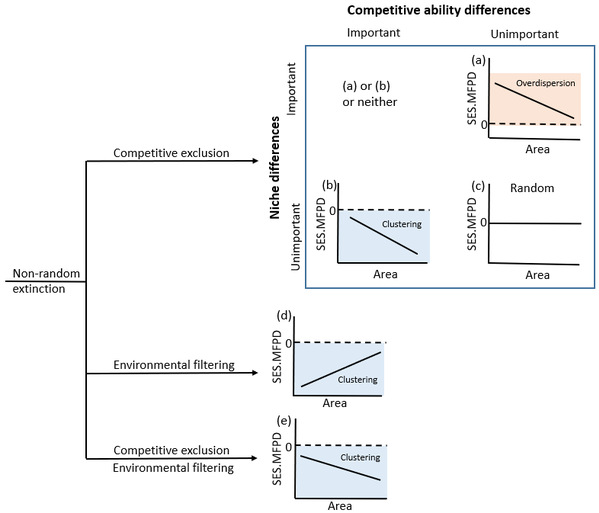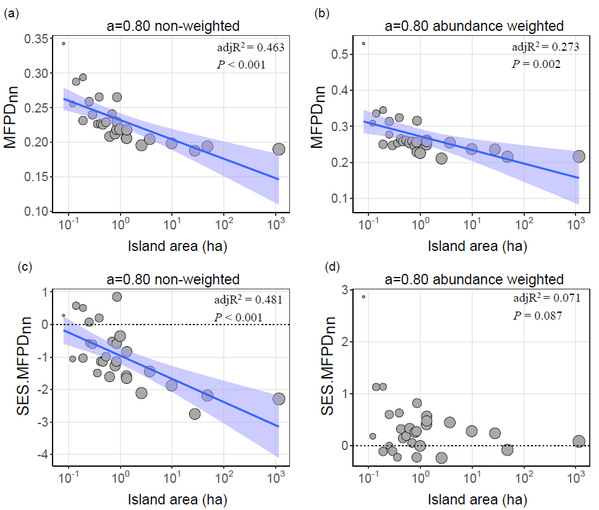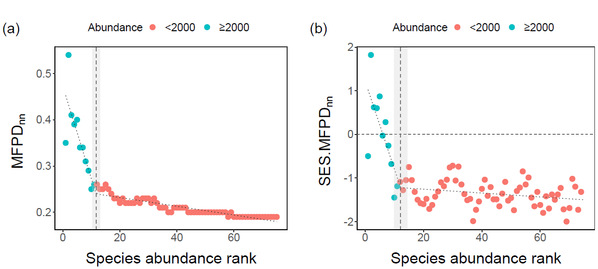
Title: What drives phylogenetic and trait clustering on islands?
Aiying Zhang, Marc W. Cadotte, Donghao Wu & Mingjian Yu
Abstract
Context
Environmental filtering is an important assembly process that structures plant communities and is commonly inferred from taxonomic, functional trait and phylogenetic patterns. However, while these approaches can be informative, the influence of other co-occurring processes on community diversity, such as competitive exclusion, remains poorly understood.
Objectives
By combing functional traits and a phylogeny of woody plants across anthropogenically created islands, we aim to explore the ways in which environmental filtering and competitive exclusion can simultaneously influence community assembly processes. We expect that communities on smaller islands, where competition for limited space and resources is more intense, should be functionally and phylogenetically less clustered than those on larger islands because this more intense competition should reduce the coexistence of the most closely related or functionally similar species.
Methods
We used ten functional traits and a phylogeny of 76 woody plant species to assess species diversity and similarity within communities across an island area gradient. We combed functional traits and phylogeny into a functional–phylogenetic distance matrix and calculated the communities’ mean functional-phylogenetic distance (MFPD) and its standardized effect size (SES.MFPD) as measures of ecological similarity.
Results
As expected, species were more phylo-functionally similar to one another than expected by chance within islands and this underdispersion grew stronger with island area, indicating that while islands generally contained clustered communities, environmental filtering and competitive exclusion were both likely occurring. By integrating species abundance distributions with community similarity, we found that the most abundant species were phylo-functionally similar to the least abundant species. Species richness increased with island area, as expected, but the additional species found only on larger islands tended to have low abundances, providing opportunities for rare species to persist.
Conclusions
With environmental filtering narrowing the number of species that can persist, the loss of phylo-functionally closely related rare species on smaller islands was likely caused by competition or stochastic removals, leading to greater species dissimilarity than on larger islands. On larger islands, the clustered patterns are likely to be the result of a combination of competitive exclusion caused by resource limitation and environmental filtering.
Link: https://doi.org/10.1007/s10980-023-01629-7









